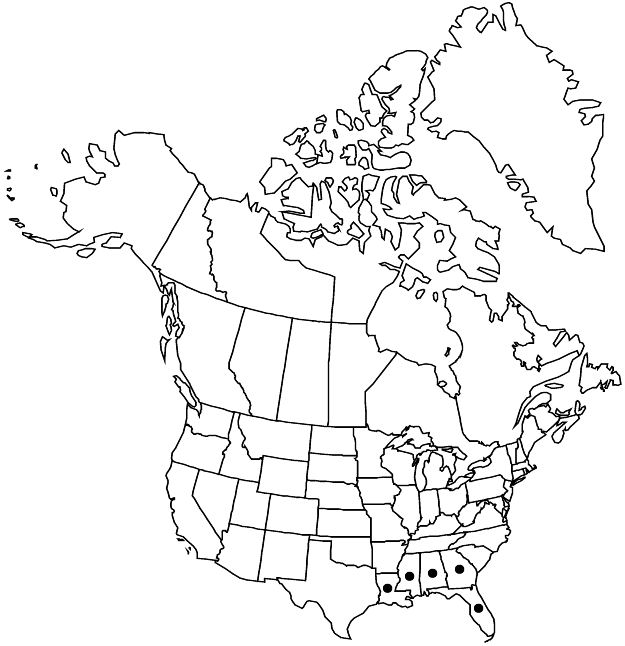Difference between revisions of "Crataegus pulcherrima"
J. Elisha Mitchell Sci. Soc. 16: 77. 1900.
FNA>Volume Importer |
imported>Volume Importer |
||
| Line 51: | Line 51: | ||
|publication year=1900 | |publication year=1900 | ||
|special status=Endemic | |special status=Endemic | ||
| − | |source xml=https:// | + | |source xml=https://bibilujan@bitbucket.org/aafc-mbb/fna-data-curation.git/src/bb6b7e3a7de7d3b7888a1ad48c7fd8f5c722d8d6/coarse_grained_fna_xml/V9/V9_992.xml |
|subfamily=Rosaceae subfam. Amygdaloideae | |subfamily=Rosaceae subfam. Amygdaloideae | ||
|tribe=Rosaceae tribe Gillenieae | |tribe=Rosaceae tribe Gillenieae | ||
Revision as of 00:35, 28 May 2020
Shrubs, 20–40 dm. Stems: twigs: young growth green or reddish-tinged, glabrous, 1-year old reddish black, 2-years old dark gray; thorns on twigs ± straight, 2-years old blackish, fine, 2–3.5 cm. Leaves: petiole length 25–40% blade, sessile- or stipitate-glandular; blade narrowly ovate or ± oblong to narrowly obovate or narrowly rhombic, 2.5–5 cm, length/width = 1.5, thin, base cuneate, lobes 2–4 per side, sides ± bowed, sinuses shallow, max LII 10–30%, lobe apex obtuse to subacute, margins serrulate, ± distant from one another for their size, veins 4 or 5(or 6) per side, apex acute, adaxial veins pilose young. Inflorescences 4–7-flowered (central axis very short); branches glabrous; bracteoles caducous, numerous, small, narrowly oblong, membranous, margins stipitate-glandular. Flowers 15–20 mm diam.; sepals narrowly triangular, 3–4 mm, margins glandular-serrate, teeth average size for series, apex obtuse, abaxially glabrous; anthers pink, small; styles 3. Pomes in clusters of 2–5, deep yellow, sometimes flushed red or purplish red, suborbicular, 6–7 mm diam.; sepals reflexed; pyrenes 3.
Phenology: Flowering mid Apr; fruiting Sep–Oct.
Habitat: Open or rocky woodlands, swamp borders
Elevation: 0–200 m
Distribution

Ala., Fla., Ga., La., Miss.
Discussion
Crataegus pulcherrima occurs from Louisiana to Georgia and northern Florida. Crataegus robur Beadle is similar and perhaps the same.
Selected References
None.